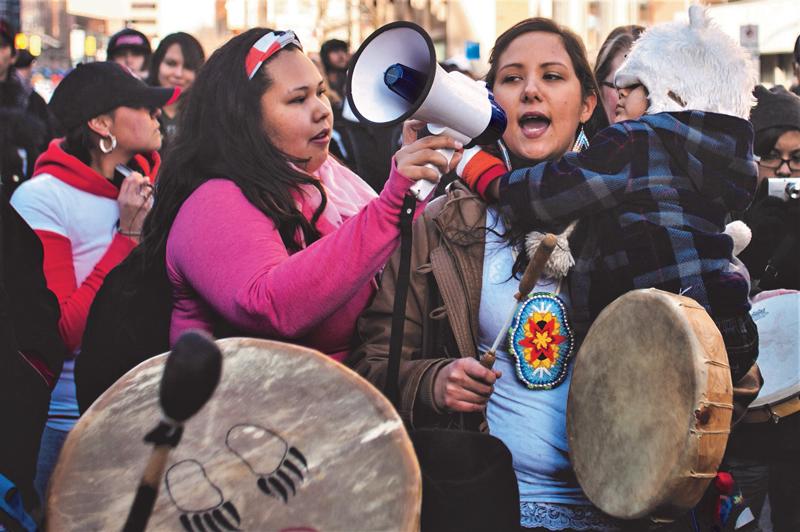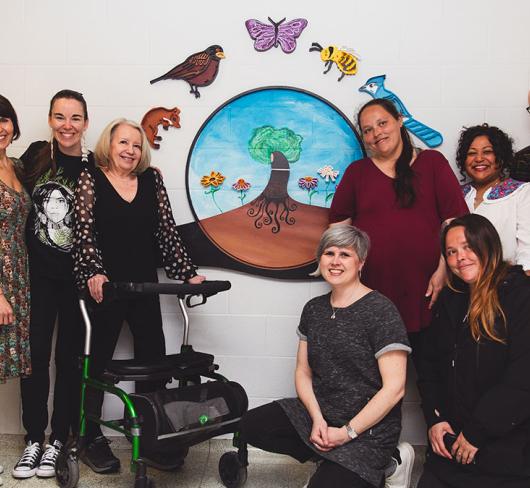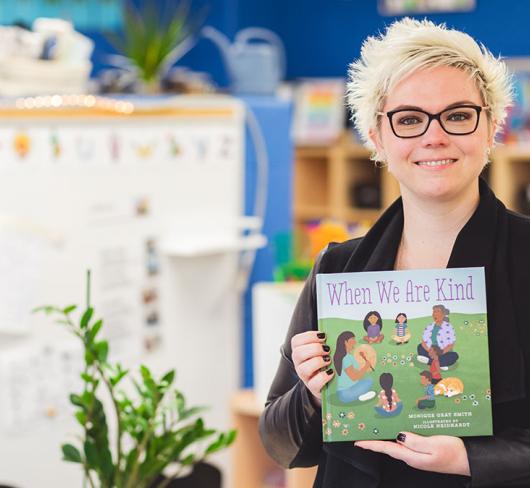
Getting Ready for Treaties Recognition Week
Since the Truth and Reconciliation Commission of Canada (TRC) released its Calls to Action in June 2015, elementary teachers across Ontario have been responding to the “Education for Reconciliation” actions (62 to 65). “We call upon the federal, provincial, and territorial governments, in consultation and collaboration with Survivors, Aboriginal peoples, and educators, to: i. Make age appropriate curriculum on residential schools, Treaties, and Aboriginal peoples’ historical and contemporary contributions to Canada a mandatory education requirement for Kindergarten to Grade 12 students” (62). It is from this Call to Action that teachers, in consultation with First Nations, Métis and Inuit people, educate students about the legacy of residential schools, traditional lands and treaties.
Acknowledging Traditional Territories and Lands
Turtle Island (North America) is the location of Indigenous peoples’ original homes. Indigenous peoples’ traditional knowledge, teachings and languages are tied to this land. Indigenous creation stories place Indigenous peoples on this land since time immemorial.
Acknowledging the traditional lands/territories in which we are situated is an important act of reconciliation and recognition of Indigenous sovereignty and protocol. It is a way of honouring the Indigenous peoples who have been living and working on the land for thousands of years. It recognizes First Nation, Métis and Inuit presence both in the past and the present and can involve naming the First Nation of the particular area and the treaties that cover the area.
One way ETFO has been honouring the Truth and Reconciliation Commission’s Calls to Action is by acknowledging the traditional territories and lands in a statement read at the commencement of all ETFO-sponsored events: The Elementary Teachers’ Federation of Ontario acknowledges and thanks the First Peoples of this territory and other Indigenous peoples for sharing this land in order for us to continue our work today.
Many Ontario schools are acknowledging the land and the territory they reside on every day during morning announcements.
To find out whose traditional land you are on contact the local Indigenous community in your area and look at the Ontario Federation of Labour’s Aboriginal Circle: Traditional Territory Acknowledgements in Ontario.
Treaties Recognition Week in Ontario (First Week of November)
The first week of November is Treaties Recognition Week. Last year, Ontario passed new legislation to recognize the importance of treaties and to bring awareness to the treaty relationships between Indigenous and non-Indigenous people in the province. According to a November 2016 press release, “The Ontario government recognizes the wrongs of previous generations and is committed to changing the future by rebuilding relationships based on trust and respect.” The goal of Treaties Recognition Week is to have all teachers educate students about the treaty relationships in Ontario.
What are Treaties?
Treaties are legally binding agreements that set out the rights, responsibilities and relationships of Indigenous peoples and the federal and provincial governments. Ontario is covered by 46 treaty and other agreements, such as land purchases by the Crown signed between 1781 and 1930.
Pre-Contact First Nations Treaties (Pre-1400s)
Indigenous peoples living on Turtle Island were well adjusted to their environment, and had the survival skills necessary to live on their land. They had spiritual, political, traditional and social systems that helped them live in balance and harmony with the natural environment.
Indigenous peoples have a long history of making treaties with other Indigenous peoples to form alliances and share resources (hunting, gathering) within each other’s territories. Spiritual ceremonies were a key part of this treaty-making process because it was a way to bind the agreement. The agreements were made in the best interest of all parties involved. An example of this nation-to-nation treaty making is the ‘Dish with One Spoon’ Wampum between the Anishinabek Nation and the Haudenosaunee Confederacy, in what is now Ontario. Even though this Wampum was made pre-contact, it is still honoured today.
Pre-Confederation Treaties (Pre-1867)
Our shared history begins around 400 years ago when European settlers first arrived. They developed methods for establishing relationships with Indigenous peoples. Promising peace and friendship, the settlers made treaties with Indigenous peoples for the purpose of agriculture, trading and the taking of lands. Although these treaties were held out to be respectful nation-to-nation partnerships, Indigenous peoples became the target of colonial policies designed to assimilate or get rid of them. The treaties were not equitable because the settlers forced Indigenous peoples to give up their lands in return for minimal compensation. One of the earliest treaties in Ontario is the ‘Two-Row’ Wampum. This agreement was between the Haudenosaunee Confederacy and the Dutch. Its intent was that settlers and Indigenous peoples would not interfere with one another and instead live in peace, friendship and respect. At the time this agreement was made, French, British and American colonies were fighting, sometimes with the help of Indigenous peoples with whom they formed alliances.
Ontario’s pre-Confederation treaties are the Treaty of Niagara 1764/81, the Crawford Purchases 1783-84, and the Robinson-Superior and Robinson-Huron Treaties 1850.
Post-Confederation Treaties and Numbered Treaties 1 to 11 (Post-1867)
Many of the treaties between Indigenous peoples and the Government of Canada (Crown) are known as the Numbered Treaties. Indigenous peoples believed these treaties would ensure their survival (they were being assimilated and food was becoming scarce) since the Government of Canada made promises to allow them to continue to hunt, fish and govern themselves. Indigenous peoples also received education and health benefits and an exemption from taxation. Indigenous peoples’ understanding of the numbered treaties is not that they were separate treaties but rather one treaty with numbers attached to show the territory covered by the treaty.
The post-Confederation treaties are Number 3, 5 and 9, and the Williams Treaty 1923.
Modern Treaties
Comprehensive land claim settlements deal with areas of Canada where Indigenous peoples’ claims to Indigenous rights have not been addressed by treaties or other legal agreements. The first of these modern-day treaties was the James Bay and Northern Quebec Agreement 1975. To date, the federal government has settled 15 comprehensive claims with Indigenous peoples in Canada. An Algonquins of Ontario land claim is currently being negotiated and covers 36,000 km2 in eastern Ontario.
Contemporary Treaty Issues
Many issues are being addressed through ongoing discussions between Indigenous peoples and the Government of Canada. It is the hope of both parties that these issues be resolved so the treaties can be honoured the way they were intended, in peace and friendship. Treaties between the Crown and Indigenous peoples are the basic building blocks in the creation of Canada. Moving forward to reconciliation, the treaty-building relationship and the recognition of the rights of Indigenous peoples need to be honoured.
Why Do We Teach About Treaties?
Whether you are a Canadian who has lived here for many years or you are a newcomer, you are in a treaty relationship with the Indigenous peoples of this land. We are all Treaty people. These agreements are not just a part of the past; they are living documents and still important today. Canada is legally obligated to live up to these agreements. Teachers and educators need to support the Truth and Reconciliation Commission of Canada Calls to Action. We need to teach all our students about treaty relationships, our collective history and the ongoing responsibility for mutual understanding.
I encourage every member of ETFO to honour Treaties Recognition Week and work with students to achieve reconciliation.
Christina Saunders is a member of the Elementary Teachers of Toronto.

